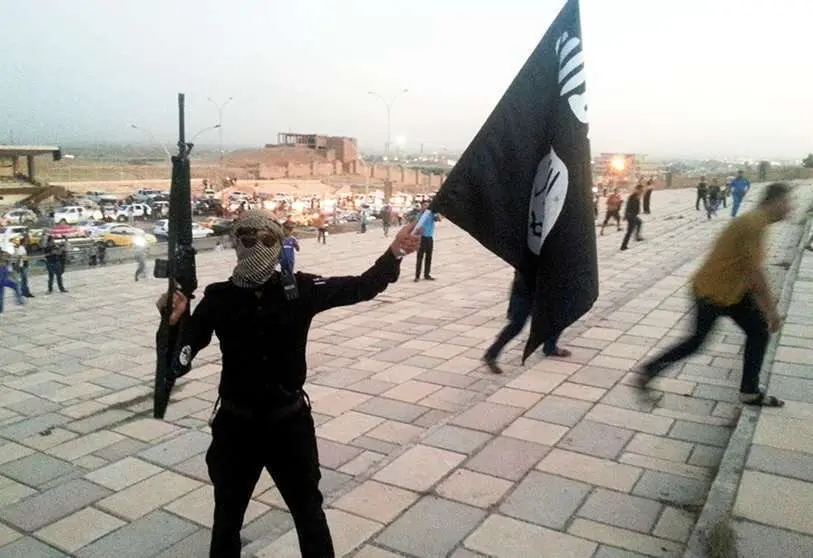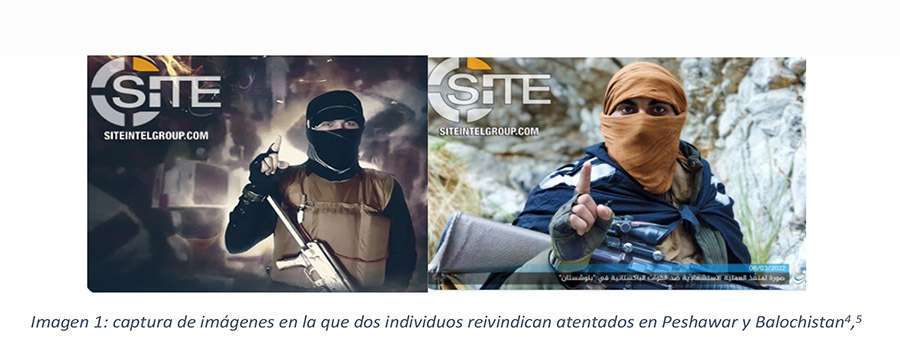Daesh's online hate speech from a counter-narrative perspective

The propaganda apparatus of the jihadist movement presents itself internationally as a long-term priority challenge within the terrorist context; as a phenomenon in itself. The territorial loss of the last Daesh strongholds in 2019 accelerated the digitisation of the organisation, transferring territorial control to online presence as a subsistence system. This is how the weaknesses at the territorial level that threatened the organisation's demise have ended up becoming an opportunity with the digital transfer in order to expand both quantitatively and qualitatively.
The discourse that Daesh has established in the online environment has at its core a narrative of hate that is configured in cyberspace as a parallel reality that exacerbates the division between the Jihadist collective and the rest of the world (us-them). This conception of hatred towards the ex-group leads to the normalisation and compromise of violence against the ex-group and represents a key factor in the process of online radicalisation.
The genesis of hate speech lies in the separation of the individual from reality. It is a course in which the individual gradually cuts himself off from his former life, from the rest of the world, and ends up disowning those who do not participate in the jihad.
The thread of hate speech is an essential part of this process of disconnecting the individual and is the central engine that leads to violent radicalisation. This discourse is the input vector that gives way to the violence generated after a process of adherence by the individual to such a hate narrative. This adherence transports the individual to another reality constructed through different elements, which are also present in propaganda of jihadist aetiology.

A very important element of the jihadist narrative is the justification narrative. On the one hand, there is the rhetoric of war, which is responsible for transferring online sympathisers to the context of war. The discourse tries to reproduce this environment of confrontation in the propaganda with the aim of determining a separation that establishes a position in the world of victims and culprits and that this generates a feeling of hatred and, in turn, a violent reaction following the assumption of the status of victim by the individual in the process of radicalisation. Likewise, this dialectic of war is used to its advantage in that it is the so-called "enemy" and "culprit" who has taken the offensive against the entire Muslim community, who initiates this war, and it is the exercise of jihad that is the defensive act against these unjust actions and against which the propaganda incites a reaction.
On the other hand, this justification of violence is always protected under religious frameworks that provide legitimacy and identity to the discourse. For example, decontextualised verses from the Koran or religious interpretations of important jihadist figures are often used.
Consequently, propaganda transfers this war environment to the individual, a narrative based on: "we are in a war, we are fighting", but also tries to spread the idea that this war has been initiated by the "enemy" against Muslim populations. Therefore, with this narrative it is understood that the action of violent jihad is defensive, not offensive. This reasoning is supported by the repeated dissemination of audiovisual content on invasions, wars, Islamophobia, etc., all of which are used as a weapon of discursive warfare. Moreover, certain jihadist interpretations of Islamic texts are the moral, doctrinal and religious contribution that sustains a presumed approval of the exercise of this violent action in order to theoretically guarantee the defence of the international Islamic community. In short, this narrative thread encourages radicalised individuals to see themselves as true warriors or "mujahideen" fighting a "holy war" to save the world.
The justification of jihadist ideology carries with it an assumption of group identity, of belonging. The aim of this narrative element is to make the individual feel an integral part of Daesh, inseparable from its organism. This leads to having the same conception of the world through a fundamentalist Islamic interpretation, understood from the jihadist point of view as the true and only one, as opposed to the equivocal interpretation of the rest of the world. In this sense, the Arabic concept of "tawhid" or monotheism is a central aspect of Jihadist doctrine, as they have a fanatical interpretation of it, based on Islam being the only true purist and monotheistic religion. It is because of this concept that, on many occasions, in Jihadist propaganda a multitude of photographs can be seen in which individuals appear with their index finger raised. This gesture is part of the symbolism that Daesh appropriates from classical Islam and becomes part of its identifying mark with a threatening and authoritarian interpretation. In this sense, this symbol is used to claim responsibility for attacks.

From this stance, jihadism rejects any innovation, even the idolatry of other religions such as the worship of saints or other religious figures from Christianity or Judaism. Likewise, the propaganda uses the Arabic concept 'mushrik' as opposed to the term 'tawhid' to disparagingly refer to those who do not participate in the Islamic faith.
Ultimately, this group identity seeks to enhance shared characteristics and beliefs such as the acquisition of a common vision (jihadist optics) or terminology (above all, a terminology to refer to the enemy). This can be understood through the principle of relational bonds when the fusion between people in the same group is very high. Moreover, if these shared singularities are seen as the true and unique ones, in the human act of comparison with other possible exogroups, according to the principle of accentuation, differences could be intensified to the point that a perception of superiority towards the other is generated.
This perception of superiority is what will have repercussions in the treatment of the other, in an attitude of rejection. Again, this is an element that is very present in the hate narrative. The use of concepts such as apostate, crusader or unbeliever are very common in hate propaganda and seek to discredit and humiliate the ex-group. In addition, this terminology has a religious tinge that is used as a presumed endorsement of the use of religion and thus of violence.
The terminology with which jihadism in its propaganda designates "the other" is ultimately aimed at dehumanisation, which implies a further step towards an attitude of violence towards "the other".
Finally, but also a very important element, is the narrative of victory and conquest. This involves the dissemination of propaganda about the organisation's territorial advances at specific junctures. For example, in Afghanistan with the takeover of the Taliban and the emergence of ISIS-K. The attack that this Daesh affiliate perpetrated in the vicinity of Kabul airport made the front page of one of the most widely distributed magazines in the Daesh online environment.
The following is an analysis of the narrative present in the text on the cover of Al-Naba, which reads as follows, in a rough translation of the text:
"...] a hero of Islam tightened his belt by detonating it among the crowds of crusaders and apostates ... causing dozens of dead and wounded, including 30 soldiers, thus declaring the beginning of a new stage of the eternal jihad and bringing the US, allied crusaders and their apostate lackeys into a new cycle of endless and bloody attrition. [...] by the grace of Almighty God accept it [...]"
This type of narrative serves, on the one hand, to glorify violent actions and, on the other, to stimulate sympathisers. It is a demonstration of the organisation's presence and activity so that, in the online environment, far from these conflicts, international jihadists are aware of these developments. In this way, they try to avoid losing the support of their followers and even that these acts are seen as an incitement to replicate them in other parts of the world.
Consequently, the joint action of all these elements forms a perfectly structured discursive thread that reaches an increasingly global and heterogeneous public. All of this allows us to appreciate the importance that this ideological scenario has been acquiring in cyberspace and the impact it has on the offline plane.
Without seeking an exhaustive explanation, it is important to mention in broad outline what the propaganda mechanism of this hate speech is in order to locate in which scenario this type of narrative fits.
The propaganda ideologically associated with Daesh has a large, decentralised and diversified structure of official and unofficial media.
These digital media, under the umbrella of the Daesh jihadist organisation, carry out and divide propaganda into different promotional campaigns. It is a propaganda strategy rooted in promotional marketing campaigns. The aim of this system is to position certain events linked to the organisation as if they were products for sale and to achieve a considerable impact on the market; in this case, in Daesh's online environment.
A practical example of this propaganda strategy is, alongside the previously mentioned campaign in the Afghanistan conflict, the even more recent campaign in regional media in the Sahel area that promotes violent action against churches and followers of the Christian faith. Initially, it started with the promotion and incitement of violence in West Africa, but then spread in space and targeted the international Christian community. Eventually, it reached a much greater online impact, with even the current Pope Francis being threatened.
"With the success of God Almighty, the soldiers of the Caliphate attacked the day before yesterday [...] so the unbelieving Christians fled from it and the "mujahideen" burned about 60 houses [...]".
On the other hand, mention should also be made of the recent campaign to promote the assault on Ghwayran prison (northeast Syria), which was presented to sympathisers as a victory for the organisation and was covered by a large number of media outlets.

In recent weeks, many of the Daesh-related media outlets have demonstrated a strong synergy in disseminating content related to the aforementioned campaigns. In view of what has happened, these regional media have achieved a remarkable and greater quantitative effect than would have been expected if they had acted independently, favouring the parent organisation and not only the factions in Syria, Afghanistan or the Sahel.
From a preventive point of view, knowing the keys to the propaganda message is one way to be able to generate alternative discourses. The aim of this is to break the growth of this subculture justifying violence based on a 'one true' narrative thread and for this to become part of the conceptualisation of an effective counter-narrative against the Daesh discourse.
Gorane Mendieta Díaz, International terrorism analyst Sec2Crime
BIBLIOGRAPHY:
- Suárez Ballester, J. M. (2016). El pensamiento salafista yihadista y su concepto de yihad. Revista de Relaciones Internacionales de la UNAM, (126).
- Knipp, k. (05/01/2017) El dedo índice: un símbolo ambivalente. DW. Disponible en: https://p.dw.com/p/2VNSn
- https://twitter.com/siteintel_jt/status/1501279030636683268
- https://twitter.com/siteintel_jt/status/1501230272993533954
- Yagüe, J. (2020) El conjunto de creencias de Al Qaeda y Daesh. Observatorio internacional de estudios sobre terrorismo.
- Gómez, Á., López-Rodríguez, L., Vázquez, A., Paredes, B., & Martínez, M. (2016). Morir y matar por un grupo o unos valores. Estrategias para evitar, reducir y/o erradicar el comportamiento grupal extremista. Anuario de Psicología Jurídica, 26(1), 122-129.
- Scandroglio, B, López, J. y San José, M.C. (2008). La Teoría de la Identidad Social: una síntesis crítica de sus fundamentos, evidencias y controversias. Psicothema, 20(1), pág. 83.
- Zuloaga, J.M. (03/09/2021) El Estado Islámico anuncia un “Batallón de Mártires” contra los talibanes y los Estados Unidos. La Razón. Disponible en: https://www.larazon.es/internacional/20210903/7wk7aovg3zhn3jrximerq34pcy.html
- https://twitter.com/siteintel_jt
